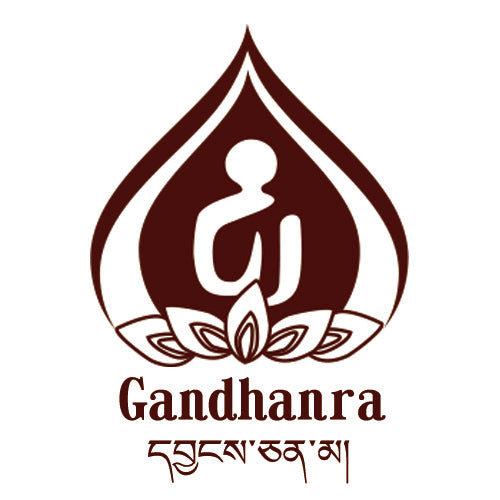Mantra of Shakyamuni,Woodblock Thangka Art
Mantra of Shakyamuni,Woodblock Thangka Art
From Derge Parkhang
⏱Vintage: Before 2004
☞Handmade: 100%
⚒Materials: Tibetan paper,Cloth,Silk
☲Size: 40" × 22"
Couldn't load pickup availability
❤This thangka comes from the Derge Sutra Printing Temple (a famous cultural heritage).
It is made on traditional Tibetan hand-made drawing paper using ancient engraving and printing techniques. (Please see the introduction below) The hand-made seal at the bottom of the painting contains: carved Tibetan paper by Derge Sutra Printing Temple(德格印经院雕刻藏纸)
It still being made in the same way as they have been for almost three hundred years: handprinted from hand-carved wooden blocks.
You can see the exquisite plant lines on the drawing paper, because the paper is handmade from pure natural plant materials, such as Pennisetum.
❤9 DIFFERENT FRAME COLORS
There are a total of 9 different colors for you to choose, please select the color number when you purshace.
Frames of different colors may vary in size, please understand.
❤Details
Material: cloth, silk,canvas,Tibetan Paper
The front is covered with silk to protect Thangka With exquisite wooden painting shaft and lanyard
❤Size & Weight
Frame Size:70cm(top) *83 cm(bottom) * 120cm(Height)(about 28" * 33" * 47")
Core Size: 47.5cm(Width) *63 cm(Height) (about 18.7" * 24.8")
❤ABOUT SHAKYAMUNI
Gautama Buddha, popularly known as the Buddha (also known as Siddhattha Gotama or Siddhārtha Gautama or Buddha Shakyamuni), was a Sramana who lived in ancient India (c. 5th to 4th century BCE).
He is regarded as the founder of the world religion of Buddhism, and revered by most Buddhist schools as a savior,the Enlightened One who rediscovered an ancient path to release clinging and craving and escape the cycle of birth and rebirth. He taught for around 45 years and built a large following, both monastic and lay. His teaching is based on his insight into the arising of duḥkha (the unsatisfactoriness of clinging to impermanent states and things) and the ending of duhkha—the state called Nibbāna or Nirvana (extinguishing of the three fires).
The Buddha was born into an aristocratic family in the Shakya clan but eventually renounced lay life. According to Buddhist tradition, after several years of mendicancy, meditation, and asceticism, he awakened to understand the mechanism which keeps people trapped in the cycle of rebirth.
The Buddha then traveled throughout the Ganges plain teaching and building a religious community. The Buddha taught a middle way between sensual indulgence and the severe asceticism found in the Indian śramaṇa movement.
He taught a training of the mind that included ethical training, self-restraint, and meditative practices such as jhana and mindfulness.
❤ABOUT DERGE SUTRA PRINTING TEMPLE
The Dêrgê Barkang (pronunciation "Dehr-gheh", alternative names Derge Parkhang, Dege Parkhang, Derge Sutra Printing Temple, Dege Yinjing Yuan, Derge Barkhang, Dege Barkhang, Barkhang, Parkhang, Bakong Scripture Printing Press and Monastery) is the barkang (printing house) associated to the Goinqên Monastery.
It is one of the foremost cultural treasures of Tibet.
Derge is a county seat in a high valley in Kham, an eastern district of traditional Tibet which is now part of China's Sichuan Province.
The Derge Parkhang is a living institution devoted to the printing and preservation of Tibetan literature, a printing temple that holds the greatest number of Tibetan woodblocks in the world. The Derge Sutra Printing Temple (Parkhang in Tibetan) is one of the most important cultural, social, religious and historical institutions in Tibet.
Founded in 1729 by Demba Tsering, the fortieth King of Derge (1678–1739) with the spiritual and literature assistance of the 8th Tai Situ Panchen Chokyi Jungne, the Derge Parkhang is an active center for publication of Tibetan Buddhist sutra, commentaries, and thangka as well as works of history, technology, biography, medicine and literature.
Books are still being made in the same way as they have been for almost three hundred years: handprinted from hand-carved wooden blocks. Cinnabar is used to colour the text red,in which workers can print eight to fifteen pages manually a minute,2500 in a day,from wooden blocks that have already been engraved with text.Thirty printers are in working condition where printers work in pairs, one puts ink on wooden press, later cleaned in a trough, while the other rolls a piece of paper using a roller which is imprinted red with sayings of Buddha.
❤NOTICE
1.This thangka is made to order, it will takes about 5 days to complete and ship.
2.Please allow 1-2cm error due to manual measurement.
3.The color may have different as the difference display.
Please make sure you do not mind before you bid.



















